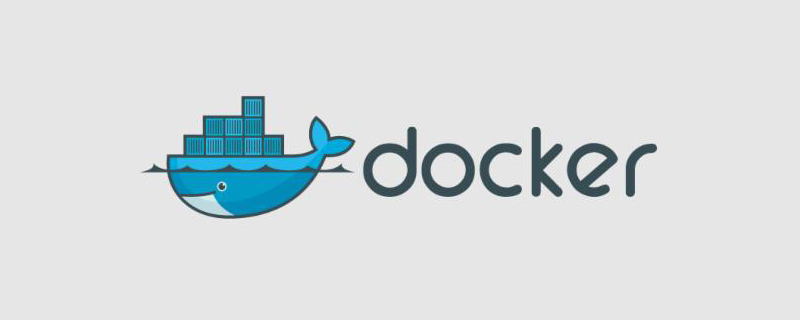What to do if there is an error in docker mapping port
Solution to the docker mapping port error: 1. Switch to the root account; 2. Check the pid of the program running through the "netstat -nap" command; 3. Kill it through the "kill -9 2901 su u260517" command program and switch programs.

The operating environment of this tutorial: linux7.3 system, docker version 19.03, Dell G3 computer.
What should I do if there is an error in docker mapping port?
Docker mapping port error solution
1. Problem
docker run -itd --name hyperlpr_fastapi -p8668:8668 hyperlpr_fastapi:v1.0
When running the docker image, the port binding has been used:
docker: Error response from daemon: driver failed programming external connectivity on endpoint hyperlpr_fastapi (646d9ef9ad18cab0a5dd981d8fd2280f010d62c2b7c06dd1c17370fceeebfe86): Error starting userland proxy: listen tcp 0.0.0.0:8668: bind: address already in use.
2 , Solution
Switch to the root account, netstat -nap to check the pid of the program running, and look for the 8668 port. You can find that it is indeed occupied. Remember the PID
. Of course, you can also directly find a certain port. Check whether the port is occupied, command: netstat -nap | grep 8668
su root # 切换到root账户 netstat -nap | grep 8668 # 查看pid tcp 0 0 0.0.0.0:8668 0.0.0.0:* LISTEN 2901/python tcp 540778 0 127.0.0.1:54836 127.0.0.1:8668 CLOSE_WAIT 24527/python tcp 540778 0 127.0.0.1:54740 127.0.0.1:8668 CLOSE_WAIT 24527/python tcp 540778 0 127.0.0.1:54820 127.0.0.1:8668 CLOSE_WAIT 24527/python tcp 540778 0 127.0.0.1:54792 127.0.0.1:8668 CLOSE_WAIT 24527/python tcp 540778 0 127.0.0.1:54742 127.0.0.1:8668 CLOSE_WAIT 24527/python tcp 540778 0 127.0.0.1:54766 127.0.0.1:8668 CLOSE_WAIT 24527/python
kill PID, kill the process, here is kill 0
kill -9 2901 # 杀死程序 su u260517 # 切换到普通用户
Recommended study: "docker video tutorial》
The above is the detailed content of What to do if there is an error in docker mapping port. For more information, please follow other related articles on the PHP Chinese website!

Hot AI Tools

Undresser.AI Undress
AI-powered app for creating realistic nude photos

AI Clothes Remover
Online AI tool for removing clothes from photos.

Undress AI Tool
Undress images for free

Clothoff.io
AI clothes remover

Video Face Swap
Swap faces in any video effortlessly with our completely free AI face swap tool!

Hot Article

Hot Tools

Notepad++7.3.1
Easy-to-use and free code editor

SublimeText3 Chinese version
Chinese version, very easy to use

Zend Studio 13.0.1
Powerful PHP integrated development environment

Dreamweaver CS6
Visual web development tools

SublimeText3 Mac version
God-level code editing software (SublimeText3)

Hot Topics
 How to exit the container by docker
Apr 15, 2025 pm 12:15 PM
How to exit the container by docker
Apr 15, 2025 pm 12:15 PM
Four ways to exit Docker container: Use Ctrl D in the container terminal Enter exit command in the container terminal Use docker stop <container_name> Command Use docker kill <container_name> command in the host terminal (force exit)
 How to check the name of the docker container
Apr 15, 2025 pm 12:21 PM
How to check the name of the docker container
Apr 15, 2025 pm 12:21 PM
You can query the Docker container name by following the steps: List all containers (docker ps). Filter the container list (using the grep command). Gets the container name (located in the "NAMES" column).
 How to copy files in docker to outside
Apr 15, 2025 pm 12:12 PM
How to copy files in docker to outside
Apr 15, 2025 pm 12:12 PM
Methods for copying files to external hosts in Docker: Use the docker cp command: Execute docker cp [Options] <Container Path> <Host Path>. Using data volumes: Create a directory on the host, and use the -v parameter to mount the directory into the container when creating the container to achieve bidirectional file synchronization.
 How to restart docker
Apr 15, 2025 pm 12:06 PM
How to restart docker
Apr 15, 2025 pm 12:06 PM
How to restart the Docker container: get the container ID (docker ps); stop the container (docker stop <container_id>); start the container (docker start <container_id>); verify that the restart is successful (docker ps). Other methods: Docker Compose (docker-compose restart) or Docker API (see Docker documentation).
 How to start mysql by docker
Apr 15, 2025 pm 12:09 PM
How to start mysql by docker
Apr 15, 2025 pm 12:09 PM
The process of starting MySQL in Docker consists of the following steps: Pull the MySQL image to create and start the container, set the root user password, and map the port verification connection Create the database and the user grants all permissions to the database
 How to update the image of docker
Apr 15, 2025 pm 12:03 PM
How to update the image of docker
Apr 15, 2025 pm 12:03 PM
The steps to update a Docker image are as follows: Pull the latest image tag New image Delete the old image for a specific tag (optional) Restart the container (if needed)
 How to start containers by docker
Apr 15, 2025 pm 12:27 PM
How to start containers by docker
Apr 15, 2025 pm 12:27 PM
Docker container startup steps: Pull the container image: Run "docker pull [mirror name]". Create a container: Use "docker create [options] [mirror name] [commands and parameters]". Start the container: Execute "docker start [Container name or ID]". Check container status: Verify that the container is running with "docker ps".
 How to create containers for docker
Apr 15, 2025 pm 12:18 PM
How to create containers for docker
Apr 15, 2025 pm 12:18 PM
Create a container in Docker: 1. Pull the image: docker pull [mirror name] 2. Create a container: docker run [Options] [mirror name] [Command] 3. Start the container: docker start [Container name]






